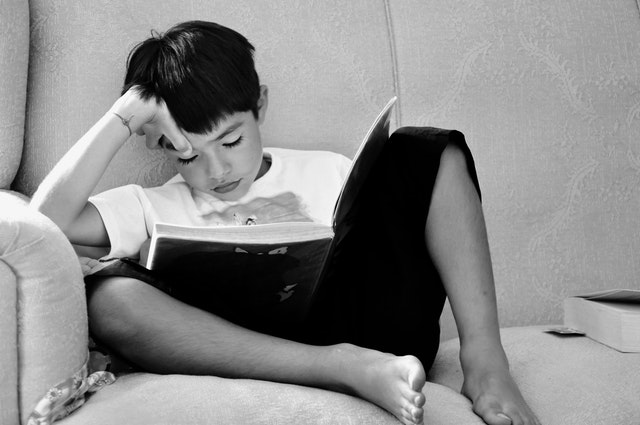Previous Year Questions on Learning Disabilities for TET

Dear readers, in this post CTET Previous Year Questions on Learning Disabilities under CDP are given. These are important CDP Learning Disabilities questions for other CTET, UPTET and other TET exams as well. Answers of these questions are given in the last of the post.
Previous Year CDP Questions on Learning Disabilities
1- Which of the following is the most appropriate method to monitor the progress of children with learning disabilities?
a) Case-study
b) Anecdotal records
c) Behaviour-rating sale
d) Structured behavioural observation
2- Learning disabilities in Mathematics can be assessed most appropriately by which of the following tests?
a) Aptitude test
b) Diagnostic test
c) Screening test
d) Achievement test
3- A child with normal intelligence shows difficulty in reading and comprehending language. It indicates that the child is showing symptoms of
a) dysgraphia
b) dyscalculia
c) dispraxia
d) dyslexia
4- Children with learning disabilities
a) have confusion between letters and alphabets that look alike
b) easily recognize and comprehend sight words
c) have retarded mental development
d) have low IQ
5- Which of these is a characteristic of a child with learning disability?
a) An IQ below 50
b) Difficulty in reading fluently and reversing words
c) Bullying other children and engaging in aggressive acts
d) Doing the same motor action repeatedly
Also read – UPTET Previous Years One Word Substitution Questions
6- Difficulty in recalling sequence of letters in words and frequent loss of visual memory is associated with
a) dyslexia
b) dyscalculia
c) disgraphia
d) dyspraxia
7- A child with hearing impairment?
a) will not benefit from academic education only and should be given vocational training instead
b) can do very well in a regular school if suitable facilities and resources are provided
c) will never be able to perform at par with with classmates in a regular school
d) school be sent only to a school for the hearing impaired and not to a regular school
8- Which of the following is NOT a characteristic of Dyslexia?
a) Problems with reading accuracy, speed and comprehension
b) Certainty as to right or left handedness
c) Slow rate of writing
d) Difficulty in learning and remembering printed words
9- A child who can see partially
a) Should be put in a ‘regular’ school with no special provisions
b) Should not be given education, since it is not of any use to him
c) Needs to be put in a separate institution
d) Should be put in a ‘regular’ school while making special provisions
10- Children with learning disability
a) cannot learn anything
b) struggle with some aspects of learning
c) are very active, but have a low IQ
d) are very wise and mature
Also read – Important Synonyms for CTET UPTET and other exams
11- Stuttering problems in students can be dealt by applying which of the following methods?
a) Pragmatic speech
b) Protracted speech
c) Dictated speech
d) Prolonged speech
12- A disorder related to language comprehension is
a) apraxia
b) dyslexia
c) aspeechxia
d) aphasia
13- If there is a learning disabled child in your class, then what will you do?
a) Do not pay any attention to him
b) Try to find out his/her type of disability and make efforts to teach him
c) Take his extra classes
d) Make his/her sitting arrangement with intelligent students
14- Learning disabilities
a) are also present in children with average or above average IQ
b) are not immutable irrespective of time and nature of interventions
c) objective facts and culture have no role in determining them
d) are synonymous with dyslexia
15- The cause of learned helplessness in children is their
a) acquired behaviour that they will not succeed
b) callous attitude towards classroom activities
c) non-compliance with expectations of their parents
d) moral decision for not taking up studies seriously
Also read – Animals under Environmental Studies (EVS)
16- Following are the examples of development disorder, except
a) autism
b) cerebral palsy
c) post-traumatic stress
d) attention deficit hyperactivity disorder
17- When a child with disability first comes to school, the teacher should
a) conduct an admission test
b) refer the child to a special school according to the disability
c) seclude him from other students
d) discuss with the child’s parents to evolve collaborative plans
18- Centrally sponsored scheme of Integrated Education for Disabled Children aims at providing educational opportunities to children with disabilities in
a) special schools
b) open schools
c) blind relief association school
d) regular schools
19- A student is aggressive in his behaviour towards his peer group and does not conform to the norms of the school, this student needs help in
a) effective domain
b) higher order thinking skills
c) cognitive domain
d) psychomotor domain
20- Learning disabilities may occur due to all of he following except?
a) cultural factors
b) cerebral dysfunction
c) emotional disturbance
d) behavioural disturbance
Also read – Classification of Computer
21- Which of the following is not a sign of reading difficulty among young learners? Difficulty in
a) reading speed and fluency
b) understanding words and ideas
c) spelling consistency
d) letter and word recognition
22- Learning disability
a) does not improve with appropriate input
b) is a stable state
c) is a variable state
d) need not impair functioning
23- The major frustration that children with hearing loss face in the classroom is
a) the inability to communicate or share information with others
b) the inability to take examinations with other students
c) the inability to read the prescribed textbook
d) the inability to participate in sports and games
24- Learning disability in motor skills is called
a) dysphasia
b) dysypraxia
c) dyscalculia
d) dyslexia
25- ‘Dyslexia’ is associated with
a) mental disorder
b) mathematical disorder
c) reading disorder
d) behavioural disorder
Also read – Important Antonyms for Competitive Exams (विपरीतार्थक शब्द)
26- Learning disabilities are generally found
a) more often in boys as compared to girls
b) more often in children belonging to rural areas as compared to urban areas
c) in specially those children whose paternal relatives have such problems
d) in children with average to superior IQs
27- A student of V-grade with ‘visual deficiency’ should be
a) excused to do a lower level of work
b) helped with his/her routine-work by parents and friends
c) treated normally in the classroom and provided support through audio CDs
d) given special treatment in the classroom
28- Orthopedically impaired children are likely to have
a) dyscalculia
b) dyslexia
c) dysgraphia
d) dysthymia
29- Learning disabilities may occur due to all of the following except
a) teacher’s way of teaching
b) pre-natal use of alcohol
c) mental retardation
d) meningitis during infancy
30- Deficiency in the ability to write, associated with impaired handwriting, is a symptom of
a) dysgraphia
b) dyspraxia
c) dyscalculia
d) dyslexia
Also read – Learning Disabilities – for CTET and other TET Exams
Answers of above Previous Year Questions on Learning Disabilities for CTET, UPTET and Other TET
1(d), 2(b), 3(d), 4(a), 5(b), 6(a), 7(b), 8(b), 9(d), 10(b), 11(d), 12(d), 13(b), 14(a), 15(a), 16(c), 17(d), 18(d), 19(a), 20(a), 21(b), 22(c), 23(a), 24(b), 25(c), 26(c), 27(c), 28(c), 29(a), 30(a)
You may use ‘comment section’ below for your valuable comments/feedback.

